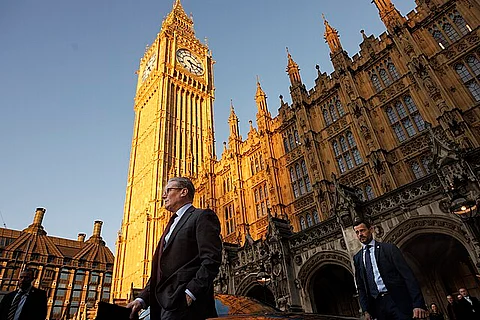

The UK government unveiled a comprehensive Strategic Defence Review on Monday, announcing plans to expand its nuclear-powered attack submarine fleet to up to 12 vessels, replacing the current seven Astute-class submarines from the late 2030s.
The initiative, part of a broader push for “warfighting readiness,” aims to strengthen Britain’s military capabilities amid rising global threats, particularly from Russia.
The new submarines, developed under the AUKUS partnership with the US and Australia, will be conventionally armed but nuclear-powered, ensuring advanced operational capacity.
Prime Minister Keir Starmer emphasized their importance, stating, that alongside the UK’s nuclear-armed submarines, the new vessels would keep “Britain and Nato safe for decades.”
The review also allocates £15 billion to modernize nuclear warheads for the Trident missile system, reinforcing the UK’s continuous-at-sea nuclear deterrent.
Led by former NATO chief George Robertson and ex-US adviser Fiona Hill, the review includes 62 recommendations, all accepted by the government.
Key measures include constructing six new munitions factories, procuring 7,000 British-made long-range weapons, and establishing a Cyber and Electromagnetic Command to counter over 90,000 “sub-threshold” cyberattacks in the past two years.
“The moment has arrived to transform how we defend ourselves,” Starmer told workers at BAE Systems’ Govan shipyard, adding, “When we are being directly threatened by states with advanced military forces, the most effective way to deter them is to be ready.”
To fund these initiatives, the government has committed to increasing defence spending from 2.3% to 2.5% of GDP by 2027, with an ambition to reach 3% by 2034.
Starmer, balancing strained public finances, framed the investment as a driver of job creation, though critics, including Shadow Defence Secretary James Cartlidge, warned that Labour’s plans must be backed by clear funding.
Labour’s review should be “taken with a pinch of salt” unless the government showed there would be enough money to pay for it, Cartlidge said.
Despite its status as a leading European military power, the UK’s army, at 70,860 full-time soldiers, is at its smallest since the Napoleonic era.
Defence Secretary John Healey aims to reverse this decline, targeting 73,000 soldiers by the next parliament, alongside £1.5 billion for military housing repairs and £1 billion for advanced targeting technology.